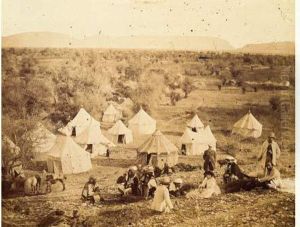Mendel John Diness Paintings
Mendel John Diness, born Menachem Mendel Diness in Odessa, Russian Empire (now Ukraine) in 1827, was a pioneering photographer who is especially known for his early work in the Holy Land, present-day Israel. His Jewish heritage played a role in his interest in the region, which at the time was part of the Ottoman Empire.
Diness initially trained as a watchmaker but shifted his focus to photography, a relatively new and exciting field in the mid-19th century. In 1848, he traveled to Jerusalem, where he became one of the first photographers to document the landscapes, cityscapes, and people of the Holy Land. His work provides valuable historical insights into the region during this period.
While in Jerusalem, Diness was employed and mentored by the British photographer James Graham, who was one of the many Western photographers drawn to the Holy Land during the 19th century to capture its biblically significant sites. Under Graham's tutelage, Diness honed his photographic skills and began creating his own body of work. His images include some of the earliest photographs of Jerusalem, Bethlehem, and other important locations.
Diness converted to Christianity in 1853, after which he adopted the name John. Following his conversion, he moved to the United States, where he continued his career as a photographer. In America, he settled in the Midwest and worked as an itinerant photographer, a common profession at the time, which involved traveling from town to town taking portraits and selling photographs.
Mendel John Diness's contributions to early photography were largely forgotten until the late 20th century when his photographs were rediscovered. Today, his photographs are recognized for their historical significance and are included in the collections of major institutions, such as the Library of Congress and the Israel Museum.
Diness died in 1900, having lived through a period of rapid change and having documented a part of the world that was of immense historical and religious significance. His work remains a valuable resource for historians and art historians, offering a window into the past through the lens of one of the first photographers to capture the Holy Land.
